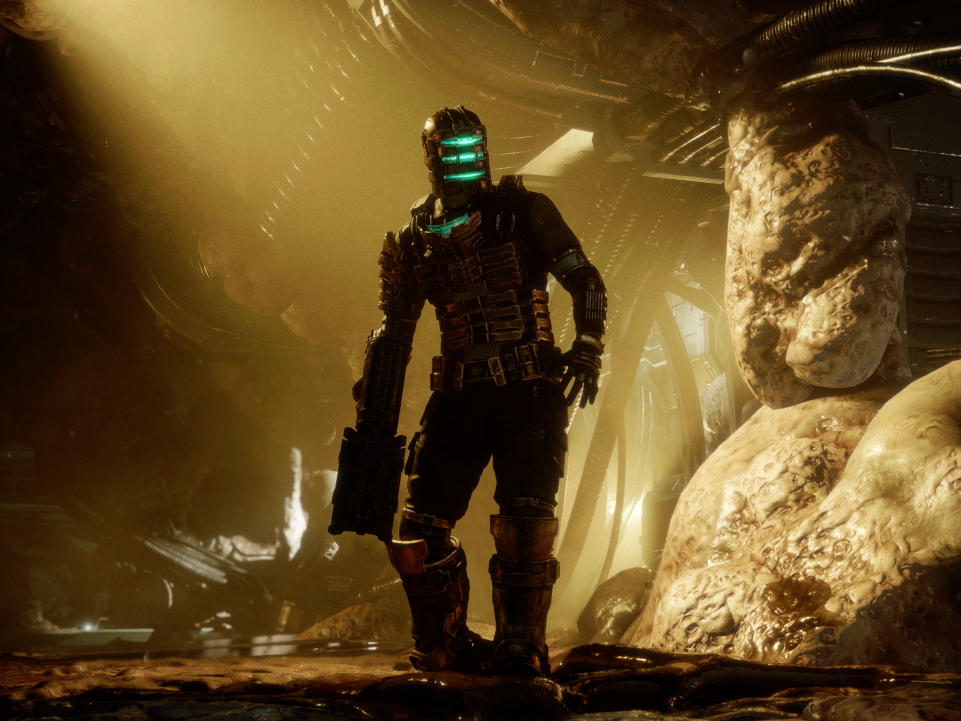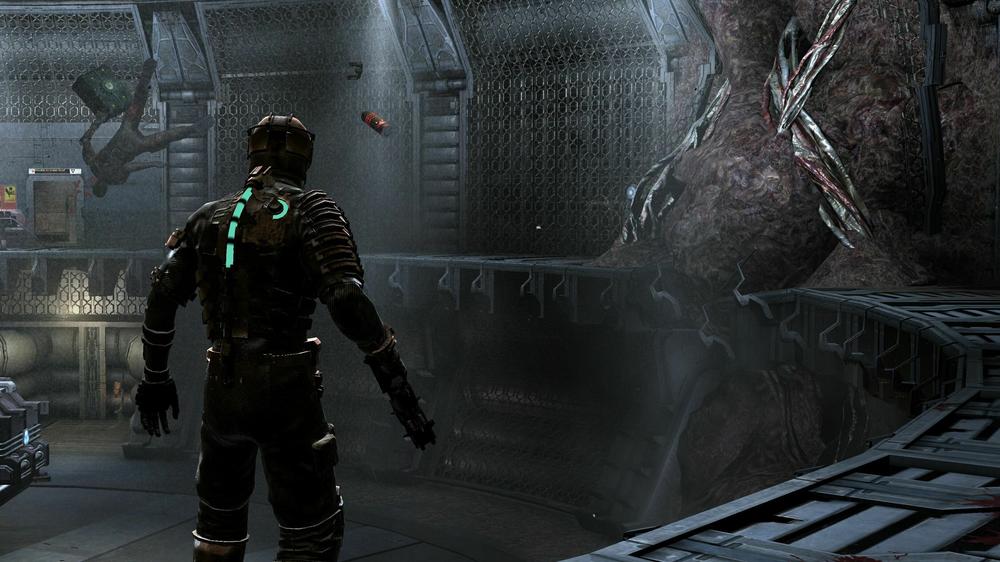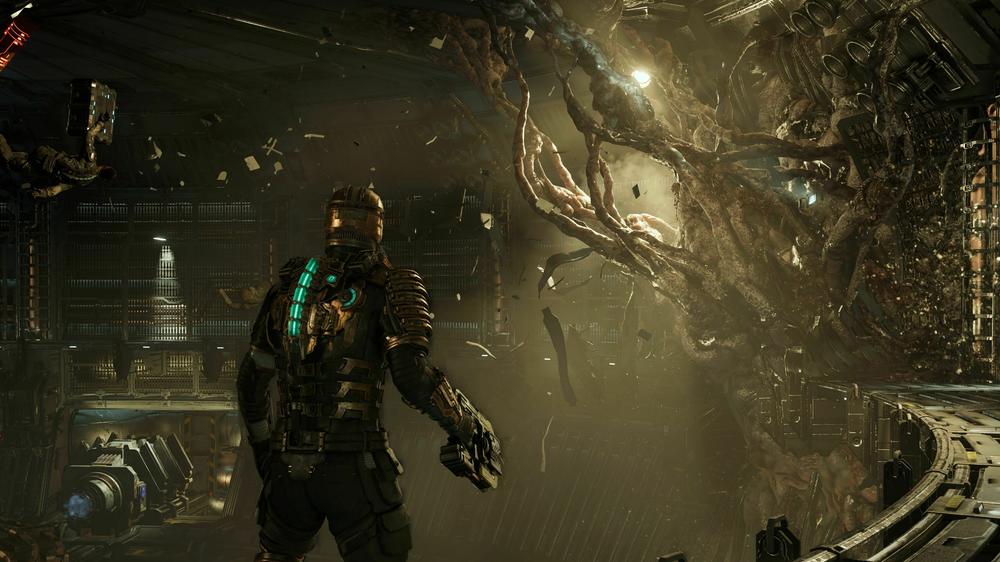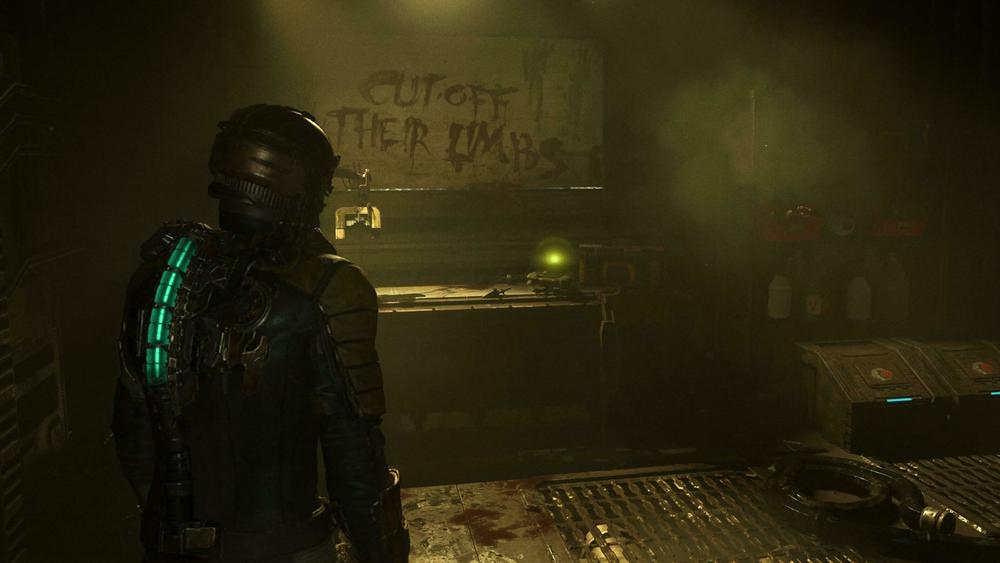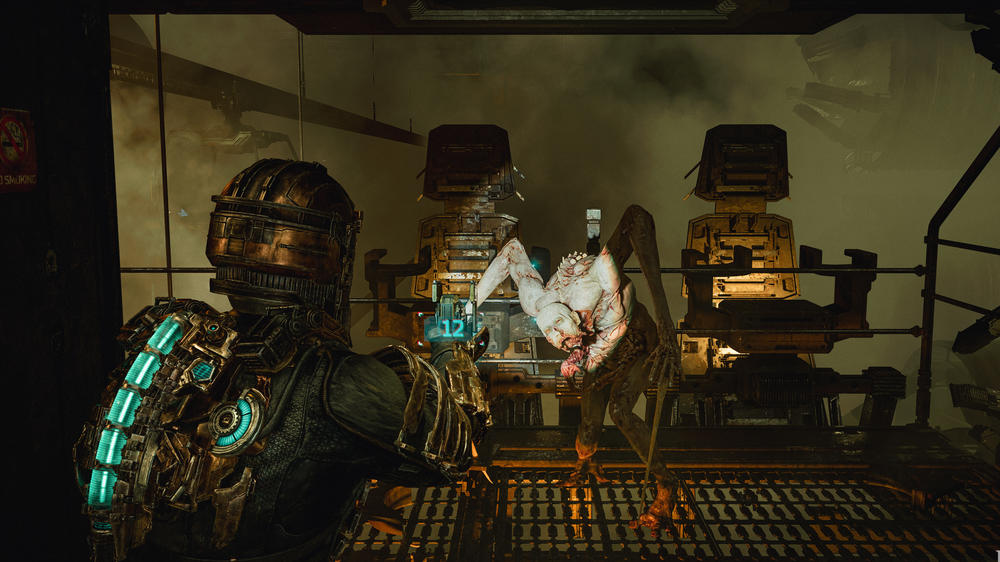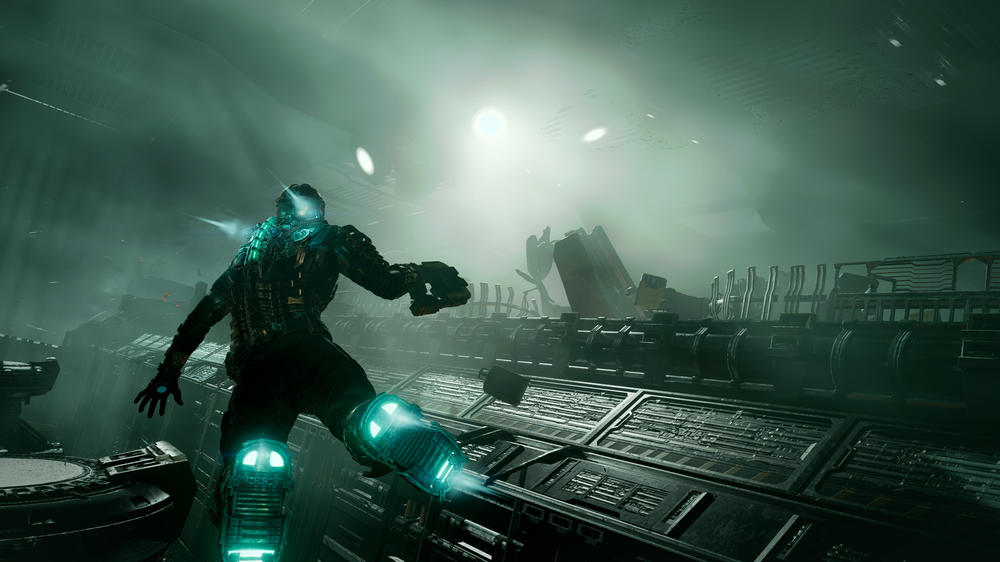Section Branding
Header Content
'Dead Space' Review: A new voice for a recurring nightmare
Primary Content
Imagine a haunted house attraction you first visited fifteen years ago. The wallpaper is peeling, the paint cracking, the animatronic ghosts jerky and faded.
Then imagine someone knocks it down and rebuilds it brick-by-brick. They plaster the walls, haul in spookier ghouls, add frightening new pictures to the frames.
You approach the house with trepidation — how could it possibly replicate the scares and thrills you so fondly remember? But by the time you leave, you can't stop smiling.
That's exactly what makes this year's Dead Space remake so exciting. It proves that a timeless game built on a solid foundation can feel as fresh in 2023 as it felt in 2008 — for newcomers and aficionados alike.
Shock to the system
Your journey begins and ends in outer space — humans have run out of resources on Earth and now travel the stars in search for more. You play as Isaac Clarke, a systems engineer following a distress beacon sent by the USG Ishimura, a massive ship equipped with mining capabilities that crack open planets to extract their minerals and ores.
Of course, things go wrong immediately. Your vessel crashes into the Ishimura, your crew members get separated or die, and you'll soon have to fight for your life against unspeakable horrors. Bodies litter the floors, cryptic warnings written in blood cover the walls, and the few survivors have completely lost their minds.
So it's up to Isaac to find his girlfriend — who was trapped on the Ishimura — and escape. Throw in an insane scientist and hostile alien life, and you've checked off some of sci-fi horror's most common tropes. But while it's not exactly new, Dead Space still feels like a proper tribute to the stories that came before it, from Event Horizon to Alien.
But there's one big change to the classic game, one that fans of the original may struggle with:
Isaac talks now.
Finding a new voice
2008's Isaac Clarke was as mute as he was fearless as he battled monsters and maniacs alike, his face always obscured by his helmet. Sure, he opened up in Dead Space 2 and 3, but Clarke's initial silence contributed to the first game's sense of mystery and isolation.
This time, developer Motive Studio tapped Gunner Wright, the same actor who portrayed Clarke in the old sequels, to reprise the role. His dialogue fleshes out some of the story and characters, but it doesn't feel excessive — and he's certainly not as chatty as many contemporary heroes.
Other tweaks are comparably measured. Aside from some script changes, this Dead Space plays nearly identically to the first, with updated visuals and audio that amplify its engaging and terrifying ambience. The game also trades the original's frustrating 3D map for a 2D one, which makes it much easier to see where you're going.
Rip and tear
The fights are still as brutal as ever, though. Dead Space pits Isaac against hordes of Necromorphs: mutated remnants of the crew of the Ishimura.
Over time, the game will teach you to use your growing arsenal to counter different types of Necromorphs. Each of the guns has a primary and secondary attack to give you the flexibility you'll need to take down each wave of horrifying creatures.
Isaac also gets some nifty powers. His stasis ability slows down enemies and his kinesis module lets you throw objects like explosive canisters for massive AOE damage. Both are key to survival, and switching between guns, stasis, and kinesis is — quite literally — a blast.
The controls also all feel smooth, but Zero-G sections can get confusing when you're trying to make out the floor from the ceiling with Necromorphs flying at you from all angles. While that disorientation must be intentional, the refined combat mechanics far outweigh any resulting irritation.
If it ain't broke...
Even as the graphics and audio benefited from the remake treatment, much of the user interface and environmental design needed no improvement.
Directly inspired by Resident Evil 4, Dead Space expanded on the over-the-shoulder camera and minimalist HUD. Isaac's health bar and stasis meter literally glow on his suit; they aren't abstractions that only the player can see. He can even light a path to the next objective to make all the backtracking less confusing.
But it's the USG Ishimura's implicit storytelling that really makes it a legendary horror setting, on par with Resident Evil 2's police station or Resident Evil 1's Spencer Mansion. You don't need to be told what happened, you can see for yourself just how chaotic and bloody the Necromorph takeover went by walking the halls.
The ship rarely provides real sanctuary, either. Even in what appear to be "safe" rooms where loot abounds, you're always vulnerable to ambush. You'll be kept on your toes throughout the roughly twelve-to-fifteen hour journey.
As game remasters and remakes continue to flood the market, developer Motive Studio distinguishes itself by preserving an original masterpiece in all its dignity, while still improving upon it with modern tune-ups. This haunted house is well worth another visit.
Copyright 2023 NPR. To see more, visit https://www.npr.org.
